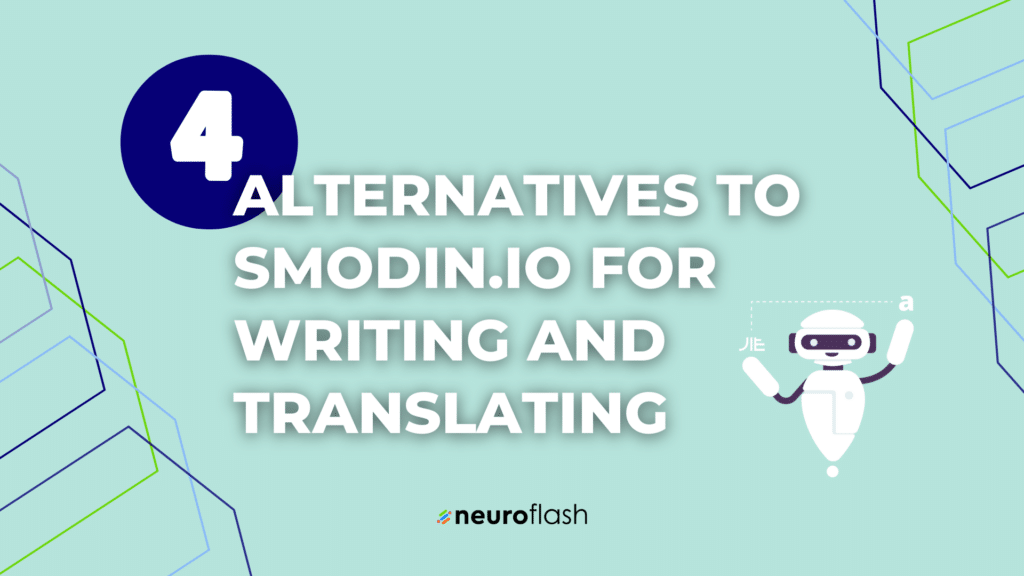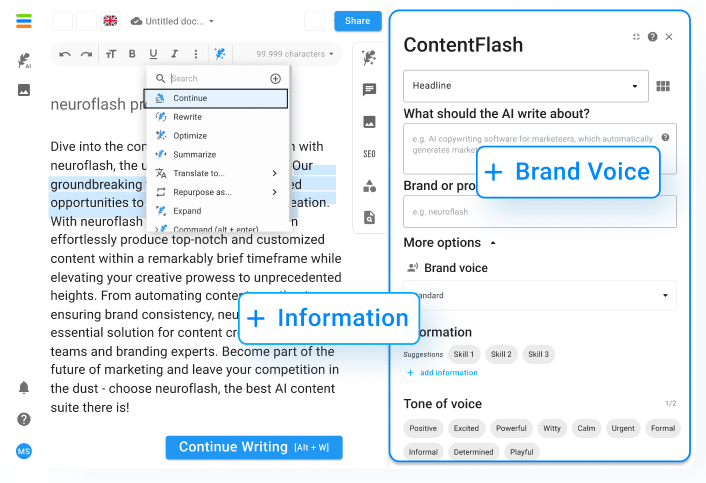What are personas?
A persona, also known as a marketing persona, user persona, or buyer persona, is a fictional character that represents and communicates attributes of a set of people within a target market. It considers both qualitative and quantitative dimensions.
In simple terms, a persona is a character that represents the thoughts of a specific person, in this case of your audience or customer group. You create them based upon your research and observations in the market to represent various user types or ‘buyer personas’ that use your products and services. By creating personas, marketers gain better insights into the customer’s needs, experiences, and demands. It does not only help you to step out of yourself; it also helps you to recognize that different users and customers have different needs and expectations. Because only then you can achieve your goal of creating a good customer experience for different target groups. This is crucial when doing business as competitors are evolving themselves as well.
Thus, the purpose of personas is to represent both reliable and realistic creations of your audience for reference. They intend to support your marketing decisions and activities and help you to create products and services tailored to your target audience as you know what your customers demand and wish for. The practice of understanding your target audience will help you to create marketing campaigns that both attract the right customers and make them stay loyal to your brand.
But personas are more than just fictional characters. They contain essences of real users, of real people. You use them in marketing to build empathy with your target audience and focus on their needs. That’s why it’s crucial that you don’t create personas based on your assumptions about your customers. Personas should always be created based on real data which have been collected from different individuals in different markets (e.g different countries or cultures). Because let me tell you one thing: Your personas are only as good as your research behind them. That’s why you should not underestimate the process of researching thoroughly. Which words do they use? What are they enjoying the most? What are their weaknesses? If you know who your customers are, you can attract more customers who have similar intentions, aspirations, and demands as your best customers.

How to identify effective marketing personas
After the short introduction into what personas are, you might ask yourself: How do I recognize effective personas? It is clear that the customers you are reaching with your marketing campaigns are not all the same. Each and every one of them has their own personality, their own passion, and their own desires. Thus, there’s a high chance – or rather a guarantee – that you will need to create more than one target persona to align with the different types of customers you have. There is no right or wrong when it comes to the number that you should follow. If your company offers a niche product or a rather specific service, you might just have two or three types of different user personas. A big company, however, that serves various needs and provides lots of different products and services might have up to 10 or even 15 personas.
Here, a few points have to be considered when creating personas:
- A persona should always represent a major user group for your website and your business: What audience segments are already using your products/services? Which commonalities do your customer groups have? Is there a pattern you can identify?
- It should both express and communicate the main needs and expectations of the most important buyer personas/user personas. Here, the best way to find out your customers wants and needs is to ask them directly. Try to get the information ”straight from the horse’s mouth”. The best thing about first-hand research is that information does not get lost and that you can get an idea of the words and phrases your audience uses at the same time.
- It should portrait a clear picture of the target group’s characteristics and you should clearly differentiate between different personas: After carrying out research, it is time to bring everything together. Use the information gathered from your research to draft up different personas.
- It should always describe real users with their backgrounds, goals and values. Here, let me refer to what I said above again: Don’t create personas based on assumptions only.
You see that a marketing persona digs deeper than demographic information such as age, gender, or origin for example. It also incorporates psychographic information, e.g goals, dreams, fears, or even struggles. By collecting information about who your audience is and what they want and need, you can ensure that your marketing efforts are geared towards your customer’s needs.
Why are personas so important?
How will you know which social channels your customers are most active on, or which medium they prefer if you don’t have a deep understanding of who you are talking to? How will you know what content they respond the most to? And most importantly: How will you know what they desire and need from your company?
I think you agree when I say that personas in marketing are essential to reinforce your brand values properly and provide the best and more personalized experience for your customers. Because personalization is the key marketing trend that consumers crave. It makes them feel special. If your audience has the feeling that your company speaks directly to them and that your product was made for them, they are more likely to buy it.
A lot of companies assume that they exactly know what their customers want. But often, reality looks different. This is, in effect, what happens when a company is convinced that they offer a great product but are confused as to why nobody is buying it. It might be a great product, yes. But if you promote it in the wrong way because you have no idea how to resonate with your targeted customer group, your marketing campaigns would be hit and miss, wasting both a lot of time and resources.
Building a strong relationship with your audience is the key if you want customers to be loyal and sign up for your services again and again. Personas keep your marketing decisions and activities focused and help you to cut back on time spent experimenting. Create more successful campaigns that align with your customer goals.

Benefits of personas
- Personas help you to connect at the right time and in the right place. Having personas in your marketing campaign is one of the key parts as marketing is a customer-oriented way of doing business. Instead of creating unwanted and generic content, personas help you to develop content that solves a problem or answers a question.
- Create remarkable content tailored to your audience. Without the right content, it will be different to attract the right customers and satisfy their needs. Personas give you, as aforementioned, a deep understanding of your customers. If you know what questions they’re asking, the struggles they have, and the solutions they are looking for, you can create meaningful content.
- Personas make you stand out from your competitors. If you take your time to do research, build personas and create content that your customers perceive as valuable, you will reach your target audience before they even know they need you.
- No waste of marketing resources anymore. Personas help you to guide your marketing efforts. When having developed personas, your marketing team can easily identify personality types and cultural aspects next to demographical information. So, personas do not only inform your marketing strategy, they even enhance it.
- Increased efficiency. With personas, your marketing activities become more efficient. Your campaigns hit the right customers with less waste. It also leads to more revenue without you having to invest additional effort or costs.
Now that you have obtained a good amount of information about personas, let’s turn out attention to archetypes.
What are archetypes?
There is always something about a company, about a brand we connect with. We feel attracted to these brands, but what is it exactly that attracts us? Is it brand values we can identify with? An amazing brand design? Or awesome ad copy? Let me tell you: It’s the brand archetypes.
Although brands are businesses that we purchase something from in the first place, we feel connection, loyalty, and yes even love for some of them. Understanding the power of brand archetypes makes building a brand much easier and more rewarding.
Archetypes were introduced by Carl Jung as models of people, behaviours, or personalities. He suggested that they were inborn tendencies, playing a role in influencing human behaviour. As regards branding, archetypes also help you to build human-like personas. They help you define your brand and make your customers develop a relationship with it and care about it. When properly identified, they can reflect the personality of brands and serve to better align personality types with specific customer groups.
There is a framework that defines 12 core archetypes. Let’s have a look at them below.

These are the 12 core archetypes
- The Innocent. It embraces happiness, goodness, safety, optimism, romance, and youth. The Innocent sees the good in everything and wants to feel well-adjusted to their environment. A few example brands include: Dove, Coca-Cola, Nintendo Wii
- The Everyman. There are some characteristics that are common to all Everyman archetypes: they enjoy the simple tastes and pleasures of life and are understanding, friendly, and inviting. Further, they like to be part of a group and are genuine. Example brands include: Ikea, Target, or eBay.
- The Hero. The Hero is on a mission to make the world a better place. Courageous, bold, and inspirational is what characterizes this archetype. The Hero has an uncommon vitality and resistance they use to fight for power or honour. It’s one of the most enduring and prevalent archetypes existing. Examples here are: Superwoman, Harry Potter, or Iron Man.
- The Rebel. This archetype likes to question authority and break the rules. It craves rebellion and revolution. Rebels like to be independent, unconventional in their methods and like to challenge the system. The best example here is Robin Hood.
- The Explorer. The explorer finds inspiration in travelling, risks, discovery, and new experiences. They also love to explore new things about themselves. Additionally, they are very resourceful and cultured. Examples:
- The Sage. The Sage can be seen as a thoughtful mentor or advisor and aims to help the world getting a deeper insight and wisdom. Their intellect and knowledge are their reason for living, they seek to understand the world with their analytical skills. Example brands are: Google or Philips.
- The Caregiver. The Caregiver is nurturing and generous. They care for others, are compassionate and always seek to protect those around them. They both try to protect them from harm and try to prevent any danger or risk. Example brands include: P&G, Johnson & Johnson, UNICEF.
- The Jester. They bring joy to the world through fun, humour, and sometimes like to make some mischief. They love to laugh, also at themselves and don’t take themselves too seriously. Their goal is to enjoy life to the fullest. Example brands: M&Ms, Ben & Jerry’s.
- The Ruler. The ruler is a classic leader and creates order from the chaos. They strive for excellence, are stable, and want everyone to follow their lead. Yet being controlling and stern, they are very organized and responsible. Example brands are: Microsoft, Mercedes-Benz, and British Airways.
- The Magician. They always wish to create something special and make dreams become reality. The magician is seen as visionary and spiritual. They’re constantly growing and transforming and renew not just for themselves, but for others as well. Example brands include: Apple & Disney.
- The Creator. The creator is not only imaginative and inventive, but they are also driven to build things with meaning and value. They love to transform things and create something completely new. They are also clever and self-sufficient. Example brands include: Lego, Adobe, Playmobil.
- The Lover. The Lover aims to create intimate moments and inspires love, commitment, and passion. Lovers are all heart and sensitivity and love to lavish it on other people. They enjoy everything that is pleasing to their senses. Example brands: Chanel & Victoria’s Secret.
How to use archetypes in marketing
If you want to build your brand effectively, you have to make sure that your audience builds an instant connection with your brand. To do so, you have to choose an archetype that your target audience will be attracted to. Your brand does not have to have the same personality as your target audience, but rather ones that attract each other. The goal is to provoke a wave of emotions every time your audience sees your logo and to remind them how much they enjoy your products and services.
Creating a distinctive identity for your company is therefore essential to elevate the visibility of your products and services. Archetypes are crucial to positioning your company and your products and services in a unique and remarkable manner. They humanize your brand, making it stand out and easier to connect with as a customer. Because as customers, we get convinced by stories we can resonate with.
In short, archetypes instil humanity into your mission and allow you to represent your brand in the most authentic truth, attracting prospective customers. You can create stronger and more persuasive branding and marketing campaigns. Imagine how successful your brand could become by understanding your audience’s preferences, expectations, needs, and pain points and evoke unconscious desires that drive positive actions in customers.
Conclusion
To thrive in today’s marketing landscape and with the tremendously growing competition, it’s not enough for your company to just merely communicate what your products or services offer. You have to ensure that you create an emotional connection with your audience to encourage brand loyalty. Using personas and archetypes is therefore fundamental in marketing because without them, you will never be able to create more than just generic messages that are designed to ‘catch all’ and hope that it resonates with your target audience.
Personas and archetypes should therefore be a staple of your marketing strategy to make better decisions and create great marketing campaigns.
Welcome👋 Happy to see you here.
Did you know that AI can help you create content 10x faster? We are Europe`s most popular AI content suite.




















